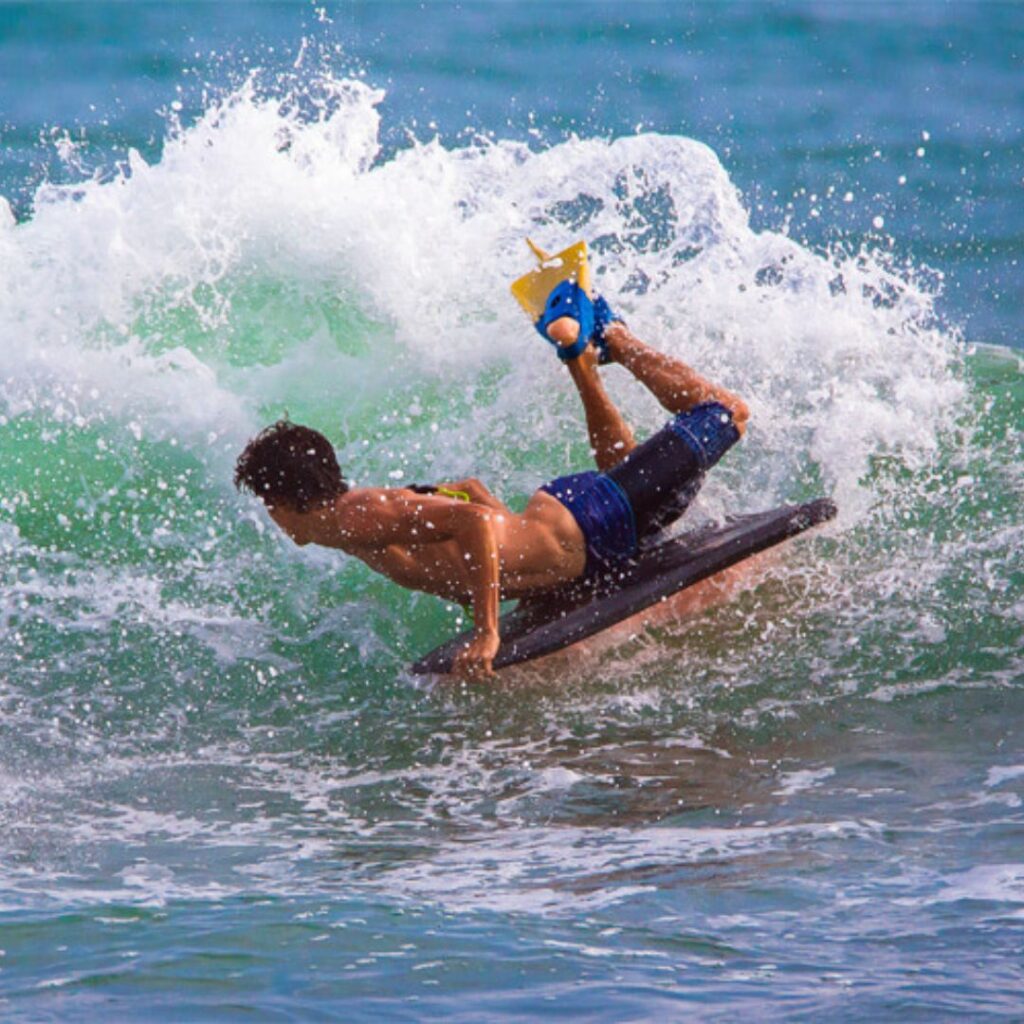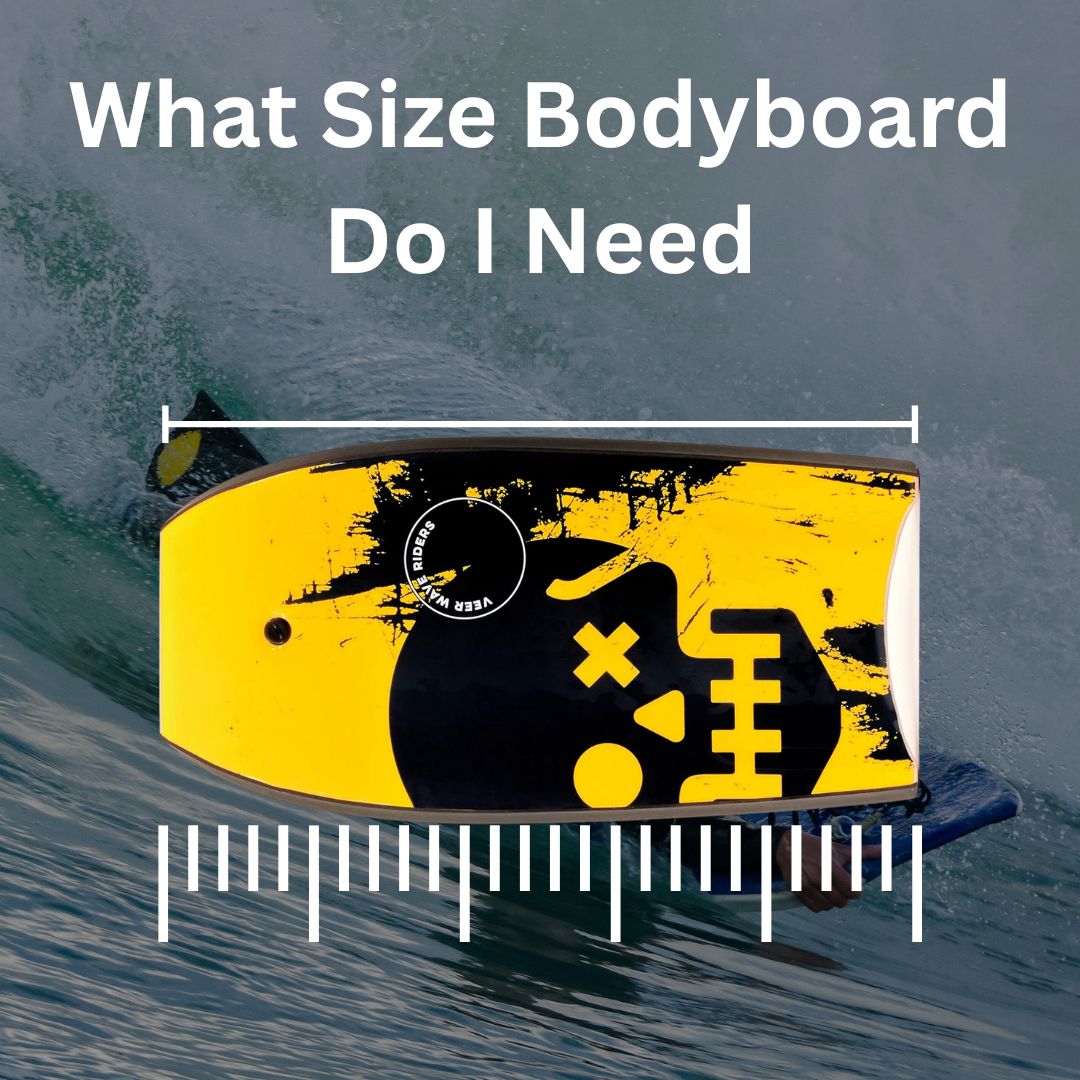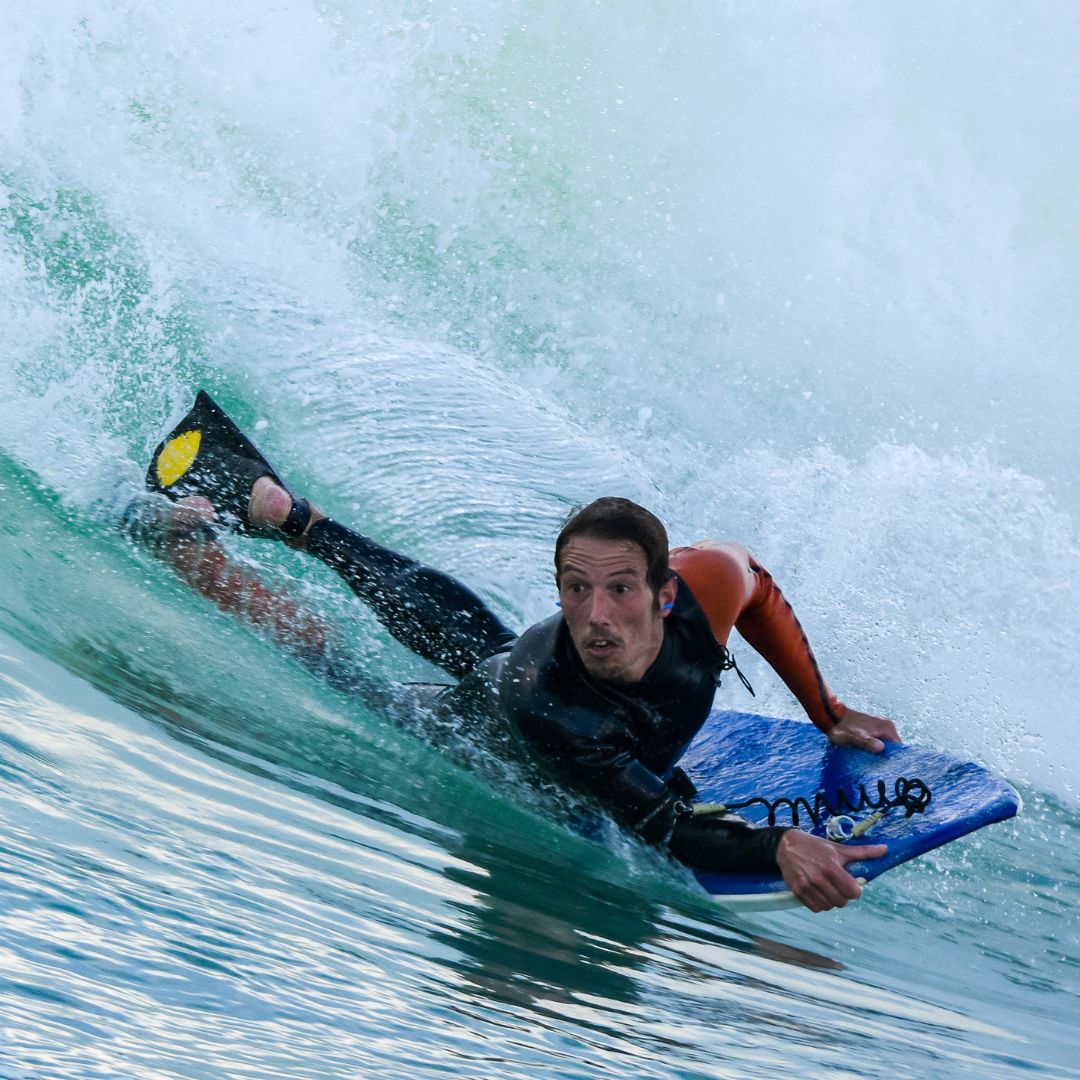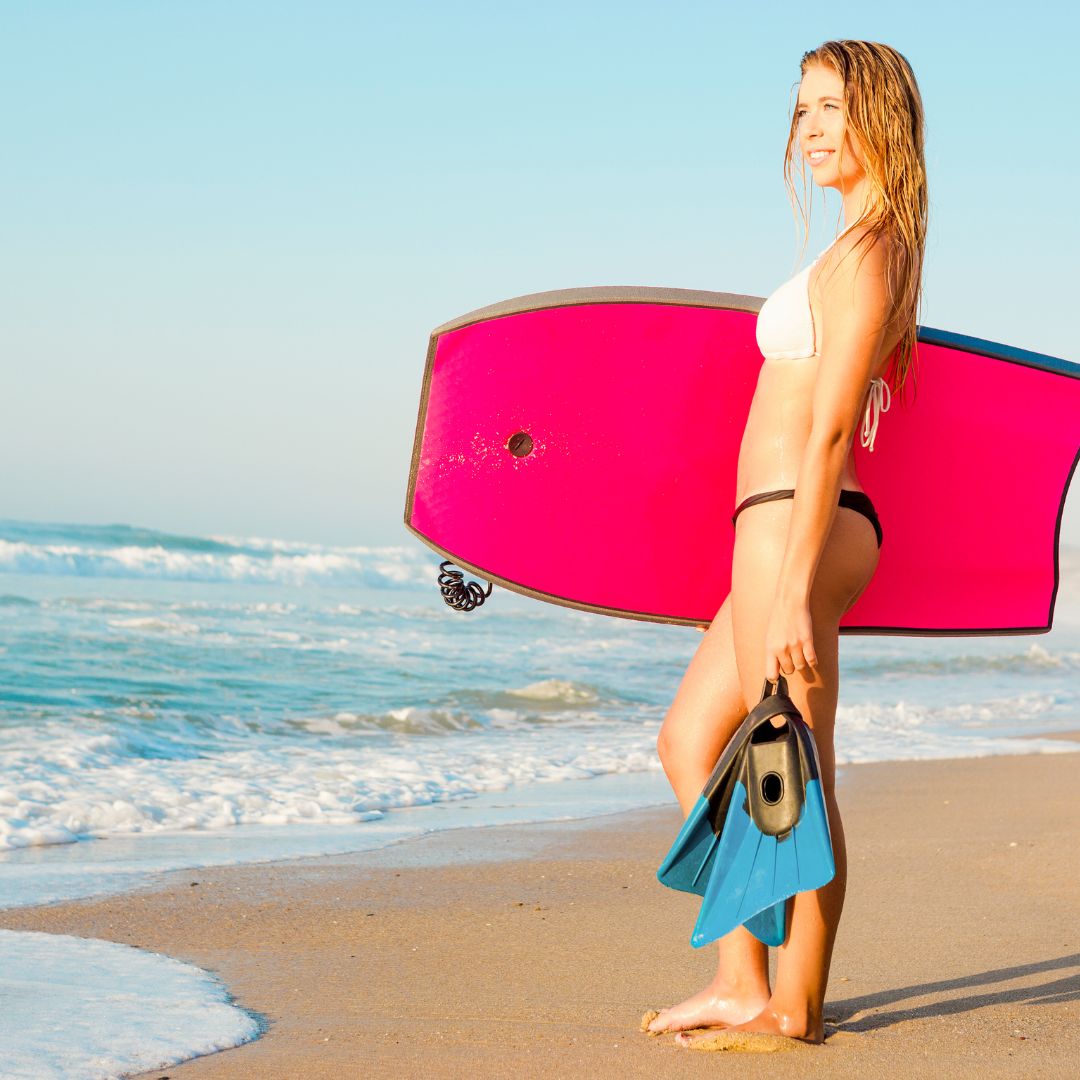Can You Bodyboard Without Fins – The Salty Truth
Can you bodyboard without fins? Yes, you can. Just like you can drive a car without steering, can slice bread with a spoon, or can use a garden hose as a jump rope. But should you? That’s the juicy, sandy, slightly sunburned question we’re answering today.
Whether you’re a curious newbie, a finless rebel, or someone who just forgot their gear on the beach (we’ve all been there), this guide will help you answer the ultimate question: Can you bodyboard without fins and still have a blast doing it?
Let’s unpack the wave of details you need to catch your next one like a pro or at least like someone who knows their leash from their leg rope.
Can You Bodyboard Without Fins?
Here’s the short answer: Yes, you can bodyboard without fins, especially in shallow, small surf close to shore. But you’ll sacrifice speed, control, and safety in certain conditions. It’s totally doable under the right circumstances, but it’s not ideal for wave-hunters looking to progress or ride larger, faster breaks.
Bodyboarding without fins is sort of like riding a bike without gears. You can still enjoy the ride, but climbing hills or in this case, catching waves gets much trickier.
Now let’s dive deeper into when it makes sense to ditch the fins, when it doesn’t, and how to actually have fun doing it.
When It’s Totally Fine to Bodyboard Without Fins
Some conditions practically invite you to go finless. These include:
✅ Shallow Whitewater Breaks
Perfect for kids, beginners, or casual beach days, shallow beach breaks let you catch waves simply by pushing off the sand or using the power of the whitewater. You’re not paddling far out, so fins aren’t necessary.
✅ Foamy, Small Surf
Waves under 2 feet? Go for it. Just don’t expect long, clean rides or serious power carves.
✅ Close-to-Shore Conditions
If you’re staying within wading depth, you can literally walk into the wave zone and catch a ride. Just be cautious of shore breaks, they look soft and bubbly, but they can smack harder than your mom’s slipper.
✅ Play Sessions With Kids
Teaching your child to bodyboard? Skipping the fins means one less piece of gear to wrangle. Just make sure they’re in safe surf and under watchful eyes.
READ ALSO: Can You Use Snorkeling Fins for Bodyboarding
When You Should Definitely Wear Fins
Now, let’s talk about the “no-go zones” for finless bodyboarding.
🔺 Bigger Waves
If you’re paddling out into deeper surf (3 feet or above), fins become your underwater engine. They help you launch onto waves, steer properly, and recover when wiped out.
🔺 Rip Current Areas
Fins aren’t just for wave-catching, they’re also essential for safety. If you’re caught in a rip, you’ll be glad you had those flipper-propulsion systems strapped to your feet.
🔺 Reef or Point Breaks
These waves break farther out, over hard surfaces. Without fins, you’re a drifting buoy waiting for trouble.
🔺 Competitive or Performance Bodyboarding
Every serious bodyboarder uses fins. Want to spin, cut back, or hit the lip? Fins give you the speed and maneuverability you need.
Why Fins Make a Huge Difference

Still wondering why fins are such a big deal? Here’s what they actually do:
🚀 Boost Speed
Fins let you kick harder, paddle faster, and match the wave’s momentum before it lifts you. Without them, you’ll often find yourself just behind the sweet spot.
🎯 Improve Control
They allow you to trim, steer, and stay balanced, especially on steeper waves.
💪 Give You Power
Whether duck-diving under waves or swimming back out through foam, fins act like turbo-charged legs.
Tips for Bodyboarding Without Fins (If You Must)
Okay, so you’re going finless. No shame. Just follow these smart steps:
1. Choose the Right Waves
Stick to mellow, slow-breaking surf. Anything with real punch is going to leave you flailing.
2. Stay Close to Shore
Wading depth is your friend. Stay in the zone where your feet can touch, especially if you’re not an Olympic-level swimmer.
3. Time the Waves
Use the natural rhythm of the surf. Start kicking just before the whitewater reaches you, and launch forward with your arms.
4. Use a Bigger Bodyboard
More surface area = more buoyancy. If you’re not using fins, size does matter. Curious about your fit? Here’s a guide: what size bodyboard do I need?
5. Belly Glide Like a Boss
Shift your weight forward slightly, but not so far you nose-dive. Arms straight, eyes ahead. Think otter meets torpedo.
Best Beaches for Finless Bodyboarding
Not every stretch of sand is ideal for this. Look for:
- 🌴 Gentle sloping beaches with long, rolling surf
- 🧂 Soft sandy bottoms (no reef, rocks, or drop-offs)
- 🚩 Lifeguarded zones (safety first, always)
Examples include:
- Waikiki, Hawaii
- Coronado Beach, California
- Bondi (Kids’ Area), Australia
Can Kids Bodyboard Without Fins?
Absolutely, and in fact, they often should. Fins can be awkward, even dangerous, for small kids who aren’t strong swimmers. Instead:
- Use a soft-top boogie board
- Keep them in knee-deep whitewater
- Add a leash so the board doesn’t drift off
- Supervise closely (like, hawk-eye close)
This is also where you’ll want to explore the best bodyboards for kids – models with wider decks, foam cores, and soft edges.
Dangers of Going Finless in the Wrong Conditions
Let’s be real: sometimes the wrong gear in the wrong spot isn’t just un-fun, it’s risky.
❗ Struggling to Catch Waves
You might paddle for 30 minutes and catch exactly zero waves. Been there. Sad lunch break.
❗ Lack of Control
Without fins, you may find it hard to turn, stall, or bail. That means you could ride straight into shallow water, rocks, or other riders.
❗ Getting Stuck
Rip currents don’t care if you’re vibing. If you can’t swim powerfully with your legs, you’re toast.
Best Alternatives to Traditional Bodyboarding Fins
Not ready for big ol’ flippers? Try these:
1. Swim Socks with Grip
Give your feet some traction and minor propulsion without bulky blades.
2. Mini Swim Fins
Some companies make small-profile fins designed for beginners or shallow water use.
3. Kick Strength Training
Yeah, we said it. Train those legs. Dryland or pool workouts can help prepare your lower half for finless adventures.
But honestly, if you want a proper setup, check out the best bodyboard fins – they’re not just performance tools, they’re safety devices too.
Can You Bodyboard Without Fins as a Beginner?
Yes, you definitely can bodyboard without fins as a beginner. In fact, it’s how a lot of people start. Fins can feel a bit awkward at first, like wearing flippers to a dinner party. As a beginner, you’ll likely be riding in shallow, foamy water near the shore, where waves are small, forgiving, and not trying to yeet you into next Tuesday.
Starting without fins is great for:
- Learning the feel of catching a wave
- Practicing timing and positioning
- Not tripping over your own feet (flippers have a way of making you walk like a penguin with a hangover)
Just keep in mind, without fins you won’t have much push. So, stick to waves that are already breaking close to the beach – those bubbly whitewater ones that even toddlers are bodyboarding like pros. Once you’re more comfortable and ready for bigger waves, fins become your secret sauce.
Can You Bodyboard Without Fins in the Ocean?
This one’s a little trickier. Technically, yes, you can bodyboard without fins in the ocean… but let’s clarify something.
By “ocean,” we’re not talking about just standing in the shallows waving to seagulls. We mean deeper, open water with real waves – the kind that roll in like they’ve got somewhere to be.
Here’s the thing: when you’re out in the ocean, fins are your motor. Without them, you’re relying on your arms and a dream. You’ll likely struggle to:
- Catch waves (you’ll miss the good ones and curse the ocean like it owes you money)
- Paddle back out (you’ll feel like a soggy piece of toast getting slapped by waves)
- Stay safe in deeper water (if a rip current grabs you, fins help you power out)
So, while you can bodyboard without fins in the ocean, it’s not a great idea unless you’re:
- In very mellow surf
- Super close to shore
- A strong swimmer who loves a good challenge (and doesn’t mind getting tossed like a beach ball)
If you want the most fun with the least flailing, go grab a comfy pair of the best bodyboard fins – you’ll feel the difference instantly. Trust me, your calves might complain, but your wave count will thank you.
Can Experienced Bodyboarders Go Without Fins?
Sure, sometimes. But only in very specific scenarios:
- For fun in shore break
- As a novelty (see: retro bodyboarding)
- To practice paddling technique or test board buoyancy
No pro is paddling out to Pipeline finless. That would be like wearing flip-flops to run a marathon.
Finless vs. Fins: The True Difference
Let’s sum this up like your favorite side-by-side snack review.
| Feature | With Fins | Without Fins |
| Wave Entry | Early, strong takeoff | Delayed or missed |
| Control | High (can turn, stall, spin) | Low (straight-line riding) |
| Safety | High in strong surf | Risky in deep water |
| Learning Curve | Slightly steeper | Easier at first, limited progression |
| Ideal For | Serious riders, big waves | Kids, shore breaks, casual fun |
How to Progress from Finless to Fin Master
Start slow. Add fins when you’re ready to:
- Catch larger, faster waves
- Improve your control and tricks
- Explore deeper waters
- Graduate from beginner breaks
Also, don’t just wing it – learn proper body positioning, duck diving, and paddling techniques. If you’re just starting out, this guide on how to bodyboard is your next best step.
The Bottom Line on Can You Bodyboard Without Fins?
Let’s wrap this up in plain speak.
- Yes, you can bodyboard without fins – but only if you’re sticking to small, shallow waves and want a chill, playful ride.
- No, you shouldn’t go finless if you’re planning to paddle out, catch real waves, or surf anywhere beyond waist-deep water.
Fins aren’t a punishment – they’re an upgrade. Once you add them, it’s like someone turned the fun up to eleven and handed you the remote.



